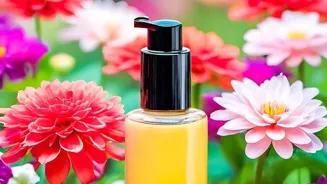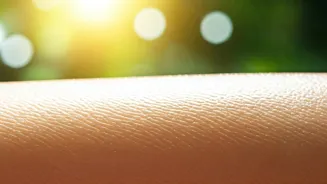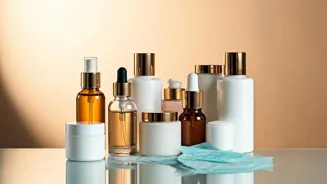Gentle Daily Cleansing
The initial step towards unclogging pores and achieving clear skin involves a consistent cleansing routine. Using a gentle cleanser twice daily is essential
for removing impurities like oil, dirt, and makeup that accumulate on the skin throughout the day. This process is not just about washing your face; it's about preparing your skin to absorb the benefits of subsequent treatments. Make sure you choose a cleanser based on your skin type, whether it's oily, dry, or combination. For oily skin, a gel-based cleanser with salicylic acid is a smart choice; for dry skin, use a hydrating, cream-based cleanser. Always rinse thoroughly and pat your skin dry with a clean towel, avoiding harsh rubbing that might irritate your skin. This daily ritual forms the basis for all the other actions you will take to unclog pores. Consistency is key: make this a habit and you'll soon start seeing better skin.
Exfoliation's Crucial Role
Exfoliation is a vital step in any skincare routine for unclogging pores, but many people get it wrong. It involves removing dead skin cells that accumulate on the skin's surface and can clog pores. There are two primary forms of exfoliation: physical and chemical. Physical exfoliation uses scrubs or exfoliating cloths to manually remove dead cells; be careful not to scrub too hard, which can irritate the skin. Chemical exfoliation, which uses acids like AHAs (alpha hydroxy acids) and BHAs (beta hydroxy acids), is generally considered gentler and more effective. BHAs, especially salicylic acid, are oil-soluble, meaning they can penetrate pores and dissolve trapped sebum and dirt. Chemical exfoliants often come in the form of toners, serums, or peels. Start with a low concentration and gradually increase it as your skin tolerates it. Regardless of the method, exfoliate one to three times per week, avoiding excessive use, which can damage the skin's barrier and cause inflammation.
The Power of Masks
Face masks can act as potent tools to unclog pores and promote clearer skin. Clay masks, in particular, are renowned for their ability to absorb oil and draw out impurities from the pores. Bentonite and kaolin clays are popular choices, with bentonite being particularly effective for oily skin. Apply a thin layer of the mask to your T-zone, or your entire face, and allow it to dry, then rinse with warm water. Charcoal masks are also effective; they have similar properties to clay masks and can further absorb impurities. Another powerful choice for targeting clogged pores is a mask containing salicylic acid or other pore-clearing ingredients. Consider using such masks once or twice a week, according to the instructions, or in rotation with other treatments. The key is to find masks that fit your skin type and concerns to maximize the effect. As always, keep an eye out for any negative reactions or skin irritation and discontinue use if necessary.
Hydration is Important
Maintaining proper hydration might seem contradictory when discussing oily skin and clogged pores, but it’s crucial. Hydrated skin is healthy skin, and a well-moisturized skin barrier is better equipped to ward off irritation and inflammation, which can often lead to breakouts. When your skin is dry, it may overproduce oil to compensate, which can then clog pores. Choose a lightweight, oil-free moisturizer for your T-zone, even if you have oily skin. Look for moisturizers containing hyaluronic acid, a humectant that attracts and retains moisture without clogging pores. Also, make sure you are drinking enough water throughout the day. Adequate hydration helps your skin function optimally, contributing to an overall healthier complexion. Proper hydration will ensure that the methods you are using to unclog your pores will be at their most effective.
Consider Topical Treatments
Beyond basic cleansing and exfoliation, you might consider topical treatments for more stubborn clogged pores. Over-the-counter products containing salicylic acid or benzoyl peroxide can be very effective. Salicylic acid, as mentioned earlier, is a BHA that dissolves oil and clears out pores. Benzoyl peroxide kills acne-causing bacteria and reduces inflammation. Start with low concentrations and apply these treatments as spot treatments or all over the affected areas, as directed on the product label. If over-the-counter products do not seem to be effective, consider talking to a dermatologist. Prescription-strength treatments, like retinoids, can also significantly help in unclogging pores and preventing future breakouts. Retinoids work by speeding up skin cell turnover, reducing the likelihood of pore-clogging buildup. A dermatologist can guide you on appropriate use and help you find the best treatment for your individual skin needs.



